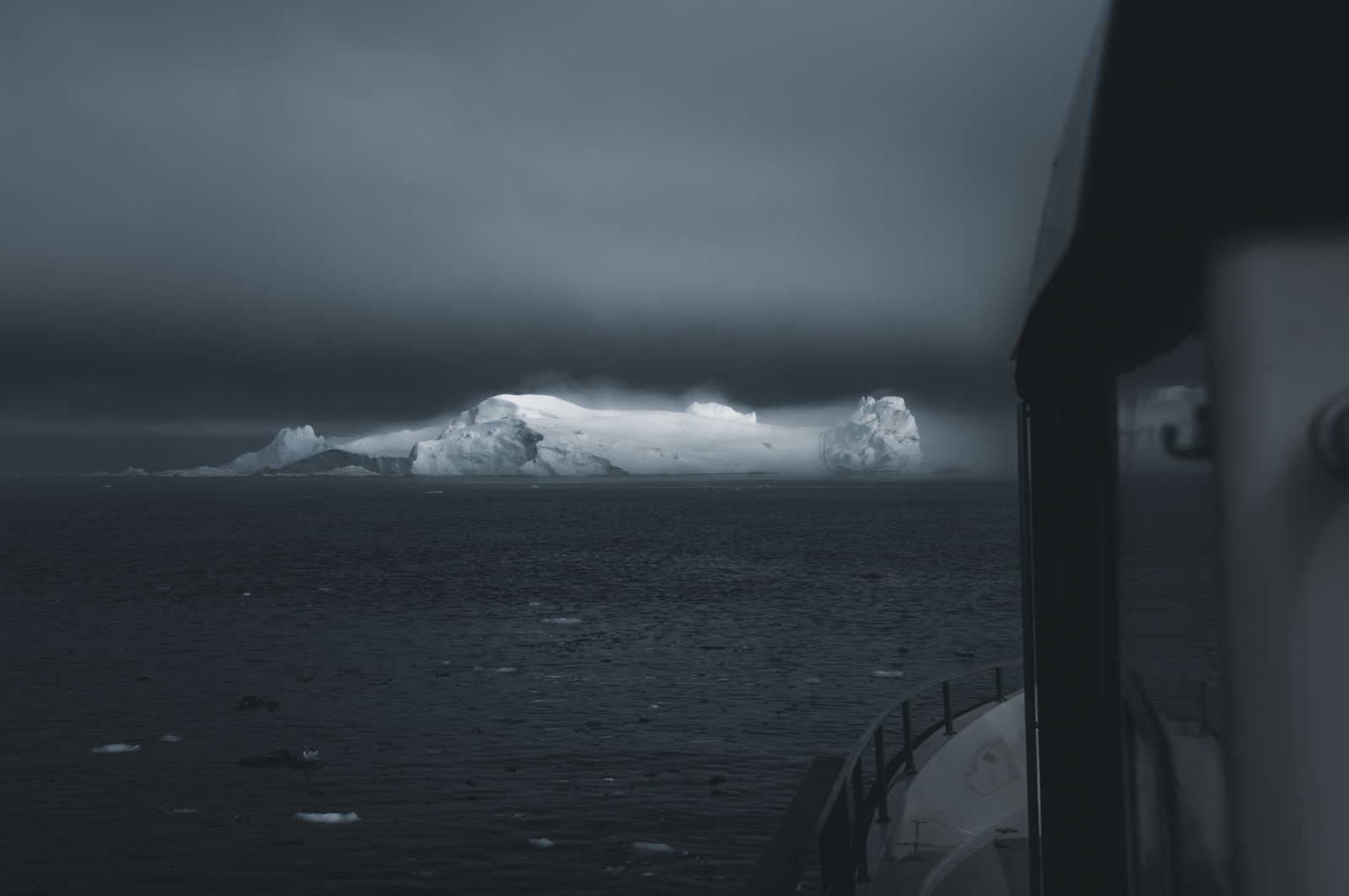
THE INLAND ICE
The taste of 100,000 years
Permanent ice that covers more than 50,000 km2 (19,000 sq. mi) is known as an ice sheet. These sheets exist in only two locations on earth – namely, Antarctic and Greenland.
The ice sheet of Greenland, also known as the Inland Ice, covers approx. 80% of Greenland. It is generally over 2 km (1.2 mi) thick and more than 3 km (1.9 mi) at its thickest point.
In a continuous, natural process, the ice sheet “calves” icebergs which melt and are absorbed into the ocean. Bottling this ice thus retrieves one of the most valuable natural resources that exists – clean drinking water – before it is lost at sea.
The Inland Ice has been encapsulated for more than 100,000 years – completely isolated from any contact with layers of soil, and was formed long before the first human being set foot within the Arctic Circle. This process of preservation is what has kept this product of nature in a uniquely pristine state – free of any pollutants or contamination.
This places INLAND ICE water in an exceptionally rare category as the purest unprocessed drinking water on earth – with a taste that fully matches its uniqueness.

GASTRONOMIC EXPLORATION
Ultimate palate enhancer
These days, as the world of gastronomy has taken centre stage, consumers are paying more and more attention to the quality of their produce, to how it is grown and where it comes from. Chefs and restaurateurs around the world are finding themselves having to rise to the challenge of delivering new taste experiences that are not easily forgotten.
It is the unique chemical composition and extreme purity of INLAND ICE water that not only gives it such a smooth mouthfeel but also prevents it from binding to any ingredients it is mixed with – a unique characteristic that makes distinct and individual flavours shine to their fullest potential.
Whether you are on a culinary journey of discovery, or are a chef, developing new flavour combinations, you will find that INLAND ICE water is the ultimate palate enhancer, giving the perfect offset in a world of multiple flavour expressions and constant sensory input.

DRINKING A TIME CAPSULE
Pioneering Purity
By bottling this untouched natural resource, INLAND ICE is able to offer you a unique taste captured in a naturally- preserved time capsule – with an exceptional level of purity.
Water quality is measured in TDS (Total Dissolved Solids). The term “dissolved solids” refers to any minerals, salts, metals, cations or anions dissolved in water. Total dissolved solids comprise inorganic salts (principally calcium, magnesium, potassium, sodium, bicarbonates, chlorides, and sulphates) and some small amounts of organic matter that are dissolved in water.
INLAND ICE water undergoes three water quality tests during the bottling process. The TDS mg/l levels of most other premium water products generally measure at approximately 150-500 TDS mg/l. In comparison, because it has been preserved in an encapsulated state for more than 100,000 years, the TDS mg/l levels of INLAND ICE water has an extreme purity of 15 TDS mg/l.
INLAND ICE Composition per litre:
Sodium / < 1.2 mg
Calcium / < 5.8 mg
Magnesium / < 0.5 mg
Chloride / < 1.0 mg
Sulphate / < 2.5 mg
Nitrate / < 0.3 mg
TDS / < 15 mg
PH Value / 6.8

SECRETS OF THE INLAND ICE
Ice core science
The Inland Ice of Greenland offers a natural resource that is both powerful and immense. This remote destination still offers uncharted territory which is why it attracts scientists, pioneers and explorers from all over the world. Glaciology is the science that studies ice and natural phenomena involving ice and ice core drilling is a scientific tool that is used to gain an understanding of the processes which are causing the ice to disappear. In this process, cores are drilled with hand augers (for shallow holes) or powered drills that can reach depths of over two miles (3.2 km) and contain ice up to 800,000 years old.
Like a prehistoric fly trapped in amber during the prehistoric era, ancient airborne particles, relics of Earth's earlier climate can end up trapped in the Inland Ice for eons. By measuring isotopes, methane, ammonia, sulphur and calcium in the ice, information about forest fires, volcanic eruptions, wind directions, water levels and past temperatures can be uncovered.
To climate scientists, these relics reveal how our planet's climate and atmosphere have changed over thousands of years – and armed with this valuable knowledge, their aim is to be able to predict present and future climate change, particularly in relation to current global warming.

GREENLAND
Harvesting a natural resource
Greenland is the largest island in the world - 17 times the size of England. Following the thorough and extensive application process we have obtained 3 concession areas granted by the Greenland government for the unlimited harvesting of calving ice and water — a royalty is paid per liter harvested to the Greenland government. The different locations and latitudes enables us to expand the harvesting season to its fullest potential — in correlation with seasonal conditions and the local wild life mating season. One of our three concession areas is Disko Bay near Ilulissat and it is situated in the northwest part of Greenland. Each day, in this area alone, 70 million metric tons of Inland ice is being pushed out into the bay in the form of icebergs. These icebergs then melt into the ocean.
The current population of Greenland is a little more than 56.000 (jan. 2020) – the people that refer to themselves as “inuits”. The indigenous people are traditionally subsistence hunters and, as their climate is not suitable for agriculture, today fishing has become the lifeline and primary industry of Greenland´s economy.
However, it is an important and necessary priority for the government of Greenland (Naalakkersuisut) to strengthen their economy by developing new industries and, thereby, improving the welfare of the Greenlandic people – as stated in the recently published report: Strategy for export of ice and water (2017-2021).
“It is the objective of Naalakkersuisut, to develop production and export of ice and water for one or more business sectors, which will contribute in generating income and employment in Greenland.” (p. 6)
A licence has thus been granted by Naalakkersuisut to allow the production of INLAND ICE water and harvesting of the calving ice in return for royalties paid for every litre harvested.
“Ice contains no future, just the past, sealed away. As if they’re alive, everything in the world is sealed up inside, clear and distinct. Ice can preserve all kinds of things that way — cleanly, clearly.
That’s the essence of ice, the role it plays.”


